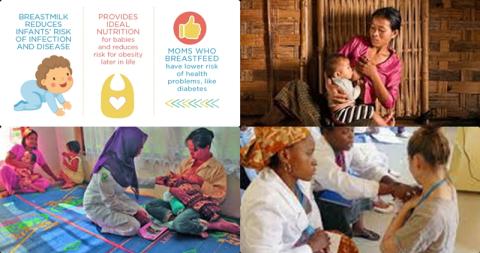
Objectives:
Exclusive breastfeeding (EBF) rates until 6 months in most low and middle income countries (LMICs) are well below the 90% World Health Organization benchmark. Therefore, this review article has been conducted.
The goal of this review article is to provide evidence on effectiveness of various interventions on exclusive breastfeeding until 6 months in low and middle income countries, compared with standard care.
Study design:
This review article included 67 studies (experimental and observational) with 79 comparisons from 30 low and middle income countries.
Results and conclusions:
The investigators found at 6 months, intervention group infants were more likely to be exclusively breastfed than controls [RR = 2.19, 95% CI = 1.73 to 2.77, I2 = 78.4%, 25 randomized controlled trials].
The investigators found larger effects were obtained from interventions delivered by a combination of professional and laypersons [RR = 3.90, 95% CI = 1.25, 12.21, I2 = 46.7%], in interventions spanning antenatal and post-natal periods [RR = 2.40, 95% CI = 1.70 to 3.38, I2 = 83.6%] and when intensity was between 4 to 8 contacts/sessions [RR = 3.20, 95% CI = 2.30 to 4.45, I2 = 53.8%].
The investigators concluded exclusive breastfeeding until 6 months in low and middle income countries can be improved by a combination of professional and laypersons, interventions spanning antenatal and post-natal periods and when intensity was between 4 to 8 contacts/sessions. Therefore, choice of intervention should be driven by feasibility of delivery in the local context to reduce infant mortality.
Original title:
Improving exclusive breastfeeding in low and middle-income countries: A systematic review by Olufunlayo TF, Roberts AA, […], Jolly K.
Link:
https://www.ncbi.nlm.nih.gov/pubmed/30665273
Additional information of El Mondo:
Find more information/studies on food fortification/malnutrition and breastfeeding right here.